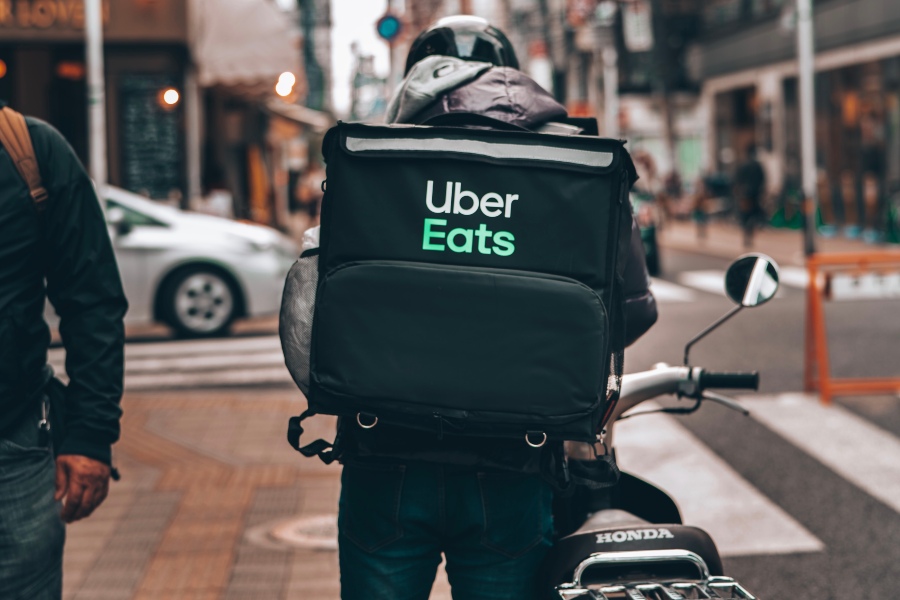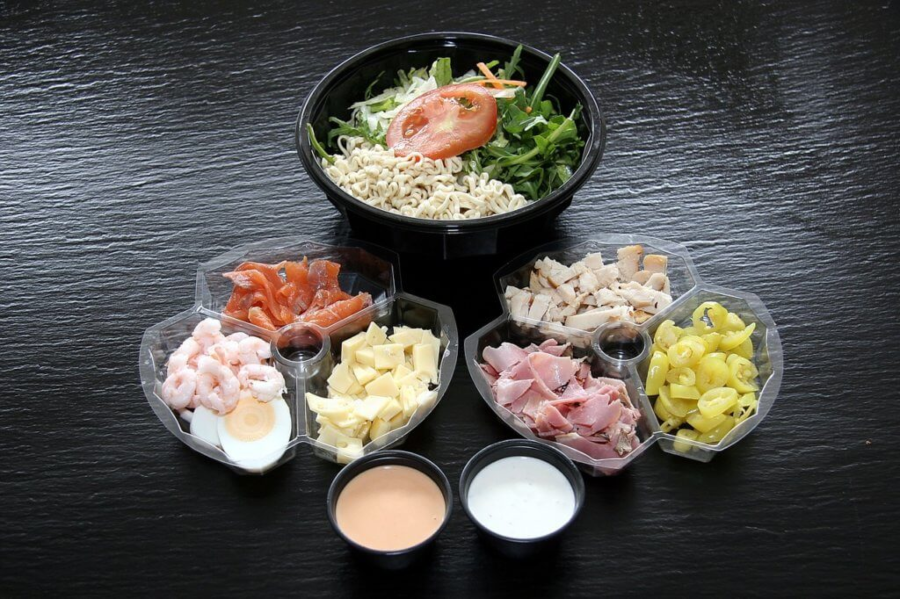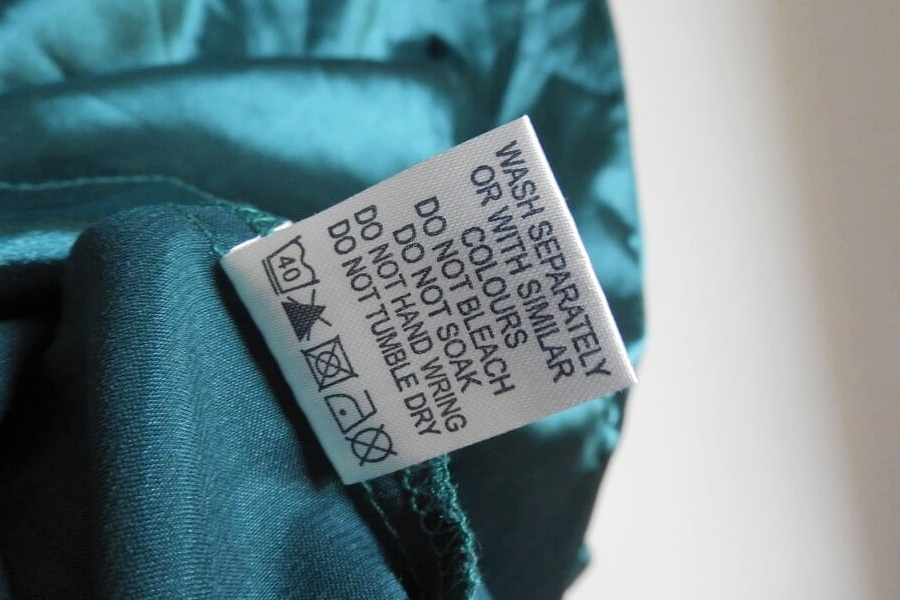Maintaining high standards of hygiene with food delivery has been of increasing importance and complexity as we continue to face COVID-19. The UK government is and will continue to put out information and advice on dealing with COVID-19, the transmission of coronavirus, and how food businesses may operate during the quarantine.
Food delivery companies, including shops and restaurants that have switched to delivery-only food services, need to be fully aware of how to safely maintain and transport food, both hot and cold, and how to ensure customer contact is kept to a minimum. The Chartered Institute of Environmental Health has put out detailed guidance, which you should look to disseminate among your food delivery workers. You can also familiarise yourself with the government’s Guidance for food businesses on coronavirus (COVID-19).
This guide on food safety for food delivery during COVID-19 is equally important for everyone in the food handling chain, from cooks to delivery drivers, to your customers. Below, we outline the key points from government guidance, along with modern guidelines on food safety for takeaways and food delivery.
Food Delivery Safety During COVID-19

Transmission Of COVID-19 Via Food Is Unlikely
The latest government guidance on coronavirus is that it is very unlikely to be contractible from food. The virus appears to primarily be spread through coughing or sneezing from person to person. It is currently believed that COVID-19 can live on hard surfaces (if not cleaned) for up to 3 days, which is why regularly cleaning of hands and surfaces is so important – which it already is in food preparation areas.
Your Checkout Needs To Allow For Customers To Identify As Self-Isolating
Most people, except key workers, are being directed to stay home during the quarantine. While everyone should be quarantining, some may be self-isolating – those unable to go out at all as they may have COVID-19. For safety, you should include a check or comment box on your website and ask on the phone so the customer can mark themselves as self-isolating. For these customers, drivers should not come into contact with them and should phone or message when the food has been delivered to the door.
General Food Delivery Safety Considerations
Outside of a pandemic, the core reason why we have safety guidelines for food delivery is food poisoning. Food poisoning is caused by bacteria such as salmonella and E.coli or a similar virus, such as norovirus. Whilst the effects are often mild, they can be life threatening for unborn babies, young children and anyone else with a low immune system, such as pregnant women or older people.
Bacteria can grow rapidly in certain conditions and so care in the processing, transportation, handling, storage, and serving of food is needed to reduce the risk of contamination.
Conditions that can encourage this bacteria to spread are:
- Time – how long food has been cooked for, and how long it has been since it was cooked or processed
- Temperature – if food that needs to be chilled below 5°C isn’t, if food isn’t reheated sufficiently, if food is left too long at a warm temperature
- Germs – from handling or contamination
All of these items can be monitored within your kitchen by adhering to the food standards agency guidelines, your own knowledge and through the training of your staff. Have a look at our article on food safety, storage and waste in commercial kitchens if you are concerned that you might be forgetting to do something important.
But even if you’ve done everything you possibly can to make sure that your food has been handled, prepared, stored and cooked safely and hygienically, how do you make sure that it stays safe when it leaves the premises?
Packing And Transit Of Food Deliveries During COVID-19

1. Separate Hot & Cold Food
Putting hot food side by side with cold food will not only affect the state it arrives in, but could be potentially dangerous as you risk hot food cooling down and cold food not being kept at the right temperature to prevent bacteria spreading.
During COVID-19, it is recommended that food deliveries should be cooked or ready to eat, rather than to be cooked at home, to minimise risk.
Hot food should be kept at 63°C or above and cold food at 8°C or below. To achieve this you will need to transport cold and hot food separately. If you are using ice packs to keep cold food cool then, particularly during coronavirus, you should be cleaning and sanitising the ice packs and insulated boxes/bags in between each use.
You should also keep deliveries to within short distances – within a 30 minute drive is recommended. You should be periodically checking food temperatures for food deliveries and recording this for your due diligence records.
2. Use Food Delivery Packaging That Is COVID-19 Safe: Clean & Disposable
All food packaging must be clean and suitable for food use – this will be known to food delivery companies but should be noted if your restaurant or food shop is moving into food delivery during quarantine. Look for the symbol of a wine glass and fork on packaging to ensure it is safe for food contact.
It is a difficult world that we are in with an increase in demand for food delivery at the same time as a war on industrial waste, single-use plastic and unnecessary wrapping. However, in food delivery, the correct packaging will ensure your food stays at the right temperature, and therefore increase the safety of the food when it reaches its destination. During COVID-19, disposable packing is recommended to create the lowest chance of contamination with returned containers.
You don’t always have to compromise on the environment when it comes to packaging. There are some fantastic eco brands, such as vegware and biopac, that offer fantastic biodegradable solutions for food packaging and takeaway food cutlery. It may be more expensive, but there is no price you can place on contributing towards saving our planet, and being able to tell your customers this is something you are dedicated to has to be a plus.
3. Transit time
During COVID-19, you should be minimising the distance you travel. For food delivery, consider reducing your delivery radius to within 30 minutes (if it isn’t already) for safety.
Making sure you don’t try to cover too wide a range for your food delivery service not only ensures the quality of your food remains perfect – that it isn’t jostled about over bumps and lumps and that it arrives piping hot – but also decreases the risk of temperature changes that expose it to the possibility of bacteria spreading and contamination, particularly that of:
- Shellfish
- Meat
- Eggs
- Dairy
4. Hygiene
You need to make sure your courier delivers food in an appropriately insulated and sealed carrier. Particularly if they are transporting it at a time of very high or low temperatures, or during busy times of dirty, fumey traffic. The containers should be cleaned and sanitised, internally and externally, throughout the day.
Ensuring Courier Safety & Food Safety During Delivery
There are currently no rules and regulations imposed on food delivery couriers with regards to food safety. However, you should be considering your food delivery drivers and riders to be food handlers.

Treat Drivers As Food Handlers
Delivery drivers and riders do not legally have to be trained in food safety or educated in the dangers of tampering with your food, however during COVID-19 it is highly advisable that you make food handling and safety guidelines available to them.
All delivery persons must wash their hands or use sanitiser before and after collecting food to avoid cross contamination. If you are supplying your own drivers, you should ensure they have 60%+ alcohol content sanitiser available.
You should also be checking any drivers for signs and symptoms of coronavirus and recording any findings for your due diligence records. Do not allow any food to be carried by drivers whom you suspect of having COVID-19.
Establish Food Safety At Pick Up & Drop Off
You should select a low risk area for pick-ups and returns for deliveries. This should be a place where food, in containers and bags, can be placed, away from the food preparation and kitchen areas, to minimise the opportunities for contact between kitchen staff and delivery drivers.
Should kitchen staff accidentally come into contact with items used by delivery riders or drivers, they should wash or sanitise their hands before moving to another task.
If you are accepting takeaway orders, you should set up a cashless system for payment for hygiene reasons – money isn’t the cleanest at the best of times. This could mean contactless payments or only accepting takeaway orders online.
If you are delivering food, you must arrange to leave orders at the customer’s door rather than handing over person to person. You can arrange customer notification through a bell/knocker, phone or text message. Ensure your delivery team are adhering to the 2m social distance rules.
Maintain Tamper Proof Seals For Food Deliveries
Zomato launched its tamper-proof packaging – something that, if your courier service doesn’t offer, you could request; or even look into using as part of your own packaging service.
Make Your Customers Aware Of Food Risks: Allergens & COVID-19

If you are a responsible, conscientious and committed food delivery provider and proud of your produce, it makes sense to indicate when your food was made and provide suggestions for how it should be stored and reheated if need be.
It could be as simple as adding a leaflet in with your food delivery order saying where your produce is (generally) sourced, offering allergen awareness and details of how takeaway food can be stored, how long it can be kept for and recommended timings for reheating.
Letting your customers know you care about their welfare and the quality of your food is a nice touch.
Communicate That You Are Following Food Safety Guidelines
During COVID-19, make sure your contact points – website or storefront – have clear messages about how your food businesses are following government food safety guidelines. Customers need to know you are making every effort to protect them and your own staff during this time. This can include notifications about how you will be delivering and if you are allowing takeaways or in-person ordering.
Update Your Cooking Process Guidelines
For the duration of the coronavirus pandemic, you should have an updated version of your Food Safety Management System, or equivalent, that reflects any changes you have made in your cooking processes. This includes: if you are moving to takeaways or food delivery, if food is now being offered that can be reheated, etc.
Ensure Staff Follow Government Guidance On Food Prep & Cleaning

You should already be familiar with the general guidance on how to avoid contamination. Having strong food safety ethics and making sure everyone is on board and understands the risks involved in food delivery is crucial.
With the growing demand for food delivery, there will need to be a growing awareness in the risks involved in it – and with that the hope that a knowledge of the basic principles of food safety be made a requirement at each part of the food delivery process.
Clean Surfaces More Often
As a rule, you should be making sure that staff are cleaning surfaces more often, especially at times when service is higher than usual. This includes: door handles, tables, push plates on doors, hand towel dispensers, brooms and mops, to name a few.
For those handling food or transporting food delivery from prep to collection areas, ensure sanitiser is available. You should be using sanitisers that comply with BS EN 1276. At close of business, make sure every surface is cleaned.
Ensure Staff Are Maintaining Social Distancing
Staff must maintain social distancing, even in the kitchen. Staying 2 metres away from one another at all times is a must. Remember that people can be affected and have no symptoms, and your staff should take that seriously, even during break times. Work areas may need to be rearranged to accommodate this distance, but it is what must be done during COVID-19.
Store & Wash Staff Uniforms Safely
Uniforms are a potential source of COVID-19 transmission. All staff should be wearing clean uniforms each day. If they are washing their own clothes, they should be kept separate from any linens, uniforms or cloths washed by your business.
If used clothes cannot be washed immediately, they should be stored in a sealed container for three days then washed as normal.
The Bottom Line
The bottom line when it comes to food safety for food delivery during COVID-19 is, you must be as clean and safe as possible. As a food delivery business, the buck doesn’t stop when food leaves your premises – it remains your responsibility until it is in the hands of your consumer. And even then, making sure you give them the right advice on how to eat, store and cook their food so that it doesn’t risk giving them food poisoning is crucial.
You never know the circumstances of your consumer – their age, state of their immune system or basic hygiene knowledge – don’t let it be your food, containers or delivery people that cause serious harm through inappropriate packaging, transit or consumption.
Learn More
For more information on staying on top of best practice in your food business take a look at our latest guides:
Keeping Your Staff Allergen Aware